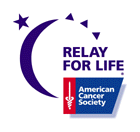From the Las Vegas Sun:
A renowned Yale University oncologist and cancer researcher, John Murren specialized in studying the effectiveness of cancer drug therapies and advancing the use of new treatments, said Jim Murren, president and chief financial officer for MGM Mirage.
Jim Murren said his brother held the vision behind the Nevada Cancer Institute.
"... It was John, and solely John, who was the inspiration and really the genesis of the Nevada Cancer Institute," he said. "It was John that encouraged the titans of the cancer world to come to Las Vegas because they knew and admired and respected him."
Dr. John Murren, 47, died Wednesday morning at the National Institutes of Health in Bethesda, Md., after losing his own battle with melanoma.
The Murren brothers lost their father, Connecticut state Rep. John Henry Murren, to melanoma, a rare but more deadly form of skin cancer, in 1990 at age 59.
John Murren specialized in the treatment and prevention of lung cancer. He was chief of the Yale Medical Oncology Outpatient Clinic, director of the Lung Cancer unit at Yale Cancer Center and had one of the largest practices at Yale, treating thousands of patients each year.
Because of his influence, the Nevada Cancer Institute is already involved in more than 30 clinical trials this year that will include about 150 patients.








